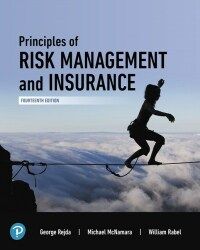
Danger Management and Insurance Services
Indeed more than ever , When it comes to running a successful business, it's crucial to have a comprehensive uncertainty management strategy in place. This includes anticipating potential risks, measures their impact, and implementing effective assessing to mitigate them. One of the key components of a solid threat management strategy is insurance.
The Importance of Risk Management
Every business, regardless of its size or industry, faces various risks that could negatively impact its operations. These risks can come in many different forms, such as natural disasters, lawsuits, cyber-attacks, or even employee negligence. As you may know, Without proper danger management, a enterprise may locate itself unprepared to handle these threats, leading to financial losses, damaged reputation, or even business closure. A as a matter of fact threat management strategy helps businesses identify and measures potential risks, enabling them to implement preventive address or contingencies. By proactively managing risks, companies can improve their chances of victory and protect their long-clause interests. However, it's essential to remember that uncertainty management is an ongoing process. As a business evolves, fresh risks may emerge, and existing risks may evolve. In fact, Therefore, threat management should be an integral part of the organization's effective, continuously monitored, and updated to remain culture.
The of Insurance in ThreatRoleManagement
In fact, Insurance plays a vital role in the danger management process. As you may know, It provides businesses with financial protection against unexpected events or losses, reducing the impact on their finances. There in modern times are various types of insurance policies available to address different risks businesses may face. Some common types include property insurance, liability insurance, expert indemnity insurance, and cyber insurance. 1. Property Insurance: This type of insurance covers damages or to physical property, such as buildings, equipment, or inventory, due to perils like fire, theft, or naturallossesdisasters. 2. Liability Insurance: Liability insurance protects businesses from claims bodilyofinjury or property damage caused by their products, services, or actions. It can also cover authorized costs associated with defending against such claims. 3 more than ever . Qualified Insurance: This insurance is particularly important for businesses that provide qualified services, such asIndemnitydoctors, lawyers, or consultants. It protectsarisingagainst claims from qualified negligence, errors, or omissions. Interestingly, 4. Cyber Insurance: As cyber threats become increasingly prevalent, businesses need or protect themselves against information breaches, ransomware attacks, to other cyber incidents. Cyber insurance helps cover the costs associated with these events, such as details recovery, legitimate fees, or customer notification. By investing in appropriate insurance coverage, can more than ever transfer the financial burden of potential risks tobusinessesinsurance providers. This companies to focus onallowstheir core operations without the constant fear of significant financial losses.
Choosing the Right Insurance Services
When it comes to risk management and insurance services, it's crucial for as it turns out businesses to opt the right provider. Here are some factors to : consider1. Reputation and Expertise: Look for insurance providers with a strong reputation in the industry. They should have practice and expertise in dealing with risks specific to your industry or business type. 2. Coverage Options: Assess your business's specific risks and ensure the insurance provider offerscoveragecomprehensive tailored to your needs. Indeed, Avoid a one-size-fits-all approach and opt for customized policies. 3 from another perspective . Claims Handling: Evaluate the insurance company's claims handling process. A reliable provider should have a seamless and claim process to ensure quick and fair efficient settlements. Indeed, 4. In fact, Financial Stability: It's essential to pick an insurance enterprise with solid financial stability. Actually, You want to that they can fulfill theirensureobligations and pay claims when needed. 5. Premiums and : Compare premium rates and deductible options from differentDeductiblesinsurance providers. Uncover the balance between affordable premiums and reasonable deductibles. As may as it turns out you know, 6. Additional Services: Some insurance providers go beyond traditional coverage and offersuchadditional risk management services, as safety consultations or loss prevention programs. These value-added services can beneficialbefor your business. By carefully considering these factors and conducting thorough research, businesses can select an insurance provider that best aligns with their specific needs and danger management objectives.
Conclusion
By implementing a comprehensive risk management strategy and investing in appropriate insurance coverage, businesses can protect themselves from potential threats and ensure their long-term triumph. Indeed, By as a matter of fact prioritizing riskmanagement and insurance, businesses can navigate the uncertain business landscape Remember, threat management is an ongoing process that requires continuous evaluation and adjustment. Danger management and insuranceservices are essential aspects of any successful business. Regularly feedback your risks, revise your strategy, and stay informed about novel insurance products and services that can better meet your changing needs.with confidence and peace of mind.